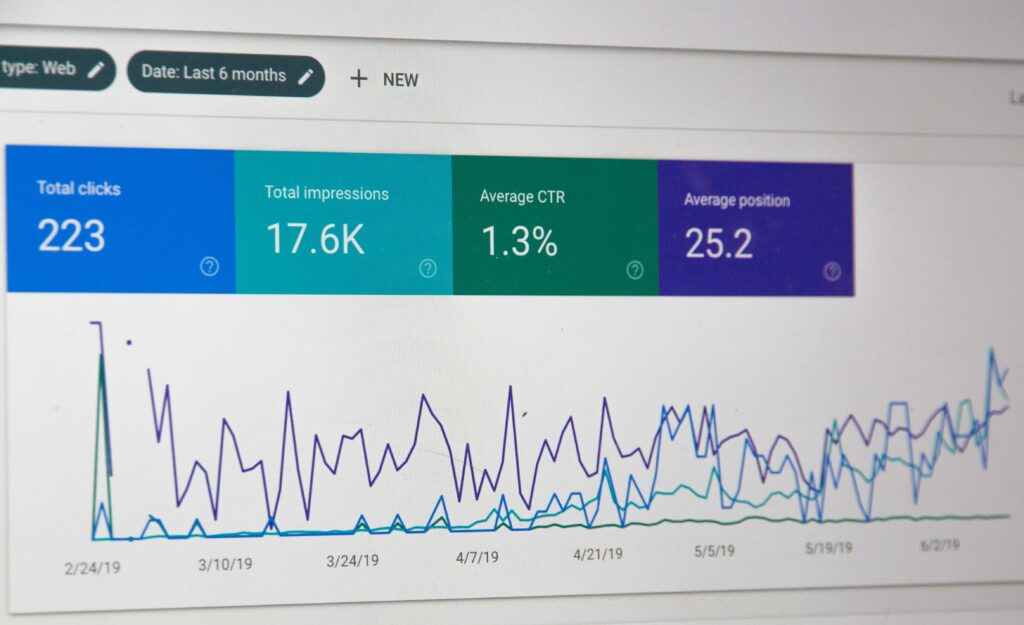What is machine learning and how does it work?
Machine learning is a subset of Artificial Intelligence that focuses on the development of algorithms and statistical models that enable computers to improve their performance on specific tasks. For example predicting customer behaviour, classifying customers, gathering data from input data etc. The field of machine learning is at its core about teaching computers to learn from data and make predictions and decisions without being explicitly programmed for each scenario.
For more information on AI, its history and development you can check out my 3 part series here:

See below for a simplified breakdown of how machine learning works:
- Data collection: Training a model begins with the collection of data relevant to the task at hand. This can be customer data, data about a website, search engine data, keyword rankings etc.
- Data preprocessing: This is the process of cleaning data and preparing it for analysis, standardising it, removing any noise and handling any missing data.
- Feature extraction: Features are specific characteristics or attributes of the data that are relevant to the problem. From an SEO perspective this could include keyword frequency, backlink quality, page load times etc.
- Model selection: Choosing a model to train and evaluate your data on will depend upon the data you are working with. Models are mathematical representations of patterns in the data and can be adjusted and fine-tuned depending on the use case.
- Evaluation: After training the model, its performance is evaluated by using a separate dataset (known as the validation dataset) which the model has not seen before. The model’s accuracy is then measured against this validation dataset.
- Testing and deployment: If the model performs well during the evaluation stage, it may be deployed on real-world data. For SEO, this might include using the model to predict keyword rankings, user clickthrough rates, user behaviour and intentions etc.
- Continuous learning: One of machine learning’s strengths is its ability to adapt and improve over time. As new data becomes available and is used to train the model, it can be incorporated to ensure it remains up to date and accurate.
Keyword research and analysis
Machine learning models are able to predict which keywords are likely to perform well in the future based on historical data. By analysing past search trends, user behaviour, and competitor rankings these models can provide you with a list of high-potential keywords that can be incorporated into your SEO strategy. They can also identify long-tail keywords that are relevant to your niche and allow you to better capture these audiences.
Machine learning models can also continuously monitor search engine results to identify changes in keyword rankings and trends. Such real-time tracking allows you to adapt your SEO strategy quickly in response to algorithmic changes or changes in user behaviour meaning you are always up to date with your competitors.
From a technical perspective this would involve collecting historical keyword data, preprocessing the features so that the model can learn from it. For example, the presence of specific keywords, seasonal patterns, keyword length, performance etc. The model would then be trained against the features and their performance in an attempt to accurately predict how a keyword will perform.
User intent analysis
Understanding user intent is crucial in keyword research and SEO. User intent refers to the underlying motivation of a user when making search decisions. It’s not just about the keywords themselves, but the context in which they are used. Machine learning has revolutionised the way we analyse and interpret user intent, making SEO strategies more targeted and effective.
For example:
- Query Classification: Machine learning models can classify search queries into different intent categories, for example, a user searching ‘best computer monitor under £500’ has an informational intent, whereas someone searching ‘Asos 27 inch 4k Monitor’ leans more on the transactional intent side. By using machine learning to categorise these searches, SEO professionals can tailor their content and optimisation to match user expectations.
- Content Gap Analysis: Machine learning algorithms can find gaps in content related to specific keywords or topics. These models are then able to suggest areas where new content can be created to meet user intent and capitalise on areas that have been missed out by existing webpages.
- Voice and Conversational Search: With the rise of voice search and conversational AI, understanding user intent has become increasingly complex. Machine learning models are constantly improving in their ability to decipher nuances in spoken language and context to provide relevant search results. SEO professionals must keep this in mind when crafting their SEO strategy.

Content optimisation and on-page SEO
Content optimisation and on-page SEO are critical components of a successful digital marketing strategy. By spending more time on these areas you are able to enhance the quality, relevance, and structure of your website’s content to improve its visibility in search engine results. Machine Learning algorithms can significantly enhance the process of refining and structuring your web content, resulting in improved visibility and an enhanced user experience.
With regards to content optimisation, machine learning is able to analyse vast datasets to identify keywords, phrases and patterns that resonate with your target audience meaning that you are able to select keywords more aligned with your customers.
Machine learning can also identify engagement patterns and identifying attributes that generate the most favourable responses. This leads to better-crafted, high-quality content that informs and captivates the audience. The ongoing learning processes involved in machine learning mean that content maintains its freshness by staying up to date with current trends and keeping your content relevant.
For on-page SEO, machine learning can optimise various technical aspects such as automating title tags and meta descriptions, enhancing header tag structure for readability, and even optimise media elements for an improved user experience.
“Systems such as Microsoft Syntex, an AI and machine learning-powered content understanding and processing tool, have been designed to intelligently manage content throughout its entire lifecycle, making it far easier for organisations to work with, organise, and get value from large amounts of unstructured data. Along with other benefits, such as automatically classifying documents and extracting information from them, Syntex can be used effectively to streamline and automate workflows and other processes. Syntex can also automatically generate repetitive documents such as contracts, invoices, and process sheets to ensure accuracy and save time, improving efficiency and reducing the need for manual intervention.”
Richard Hutchings, Chief Technology Officer at Littlefish
Conclusion
The integration of machine learning into the realm of SEO has brought about a transformational revolution, fundamentally reshaping the SEO landscape and significantly enhancing its precision and effectiveness. This data-driven approach helps with keyword search, user intent analysis, on-page SEO etc., allowing professionals to better target users and delve deeper into user behaviour and trends.


